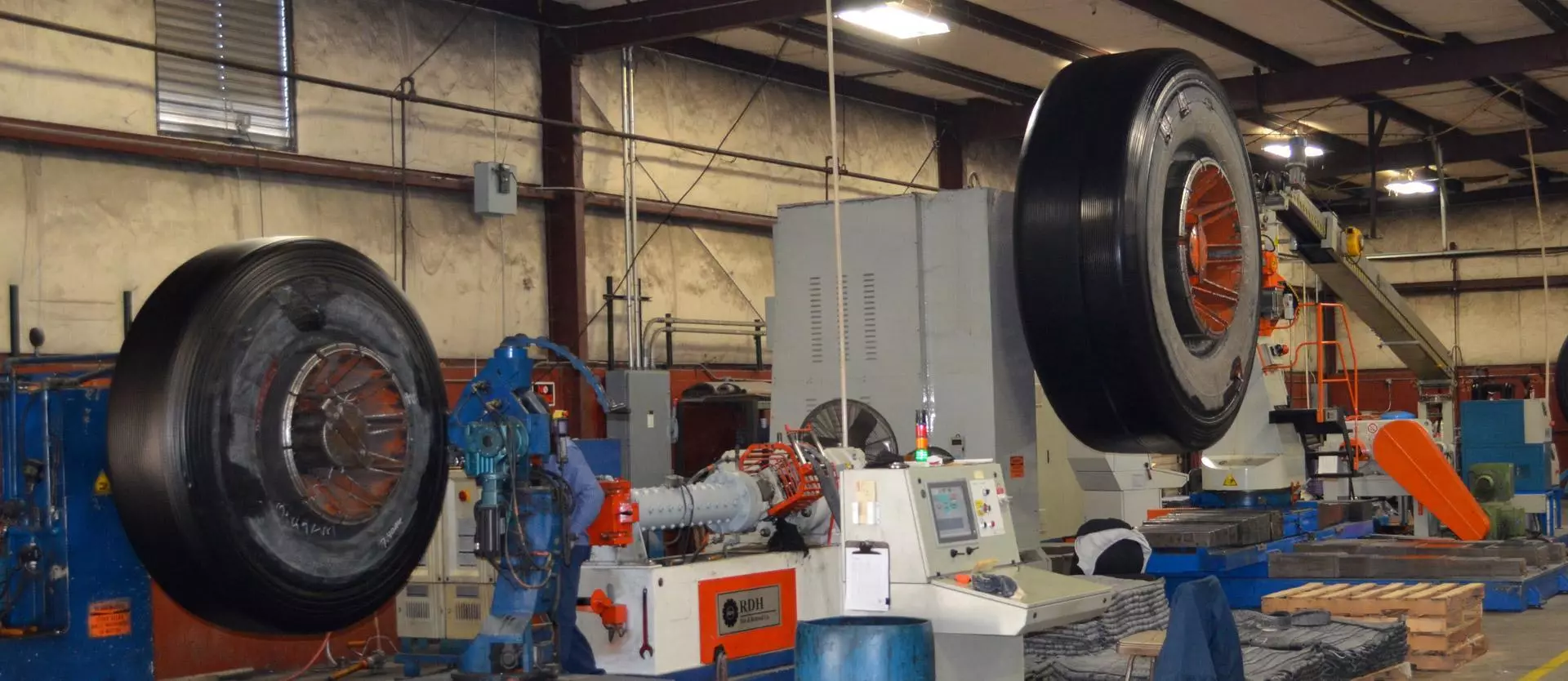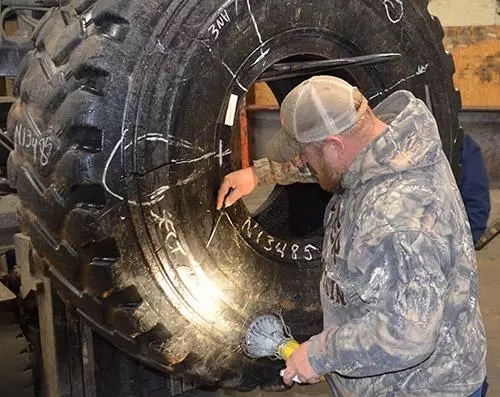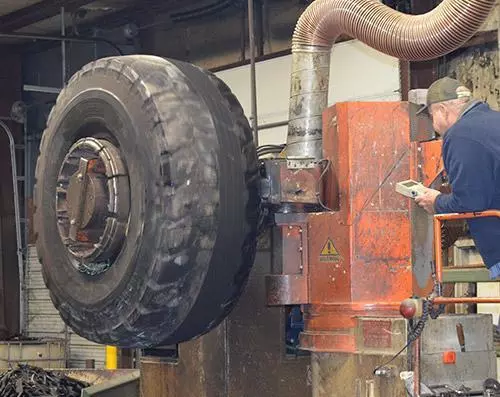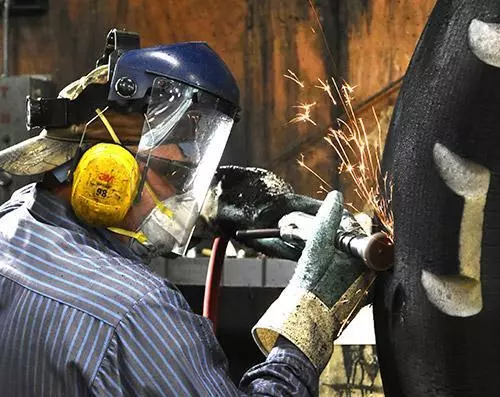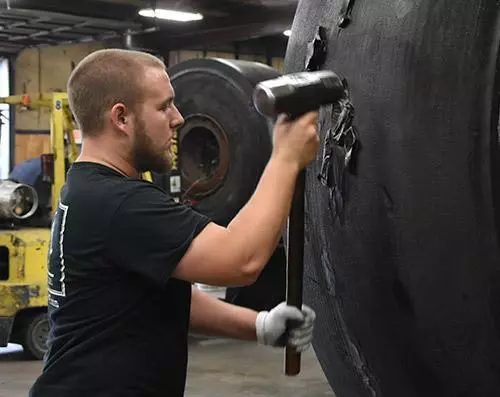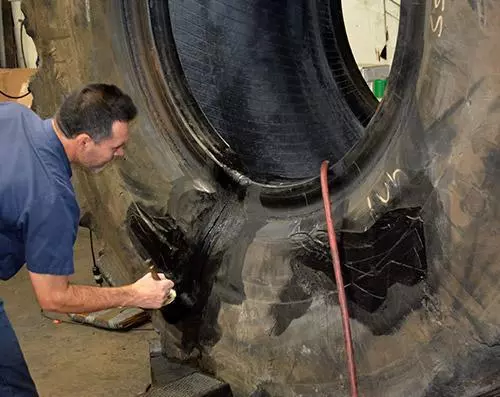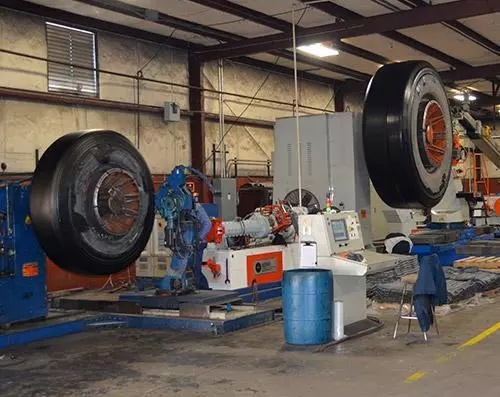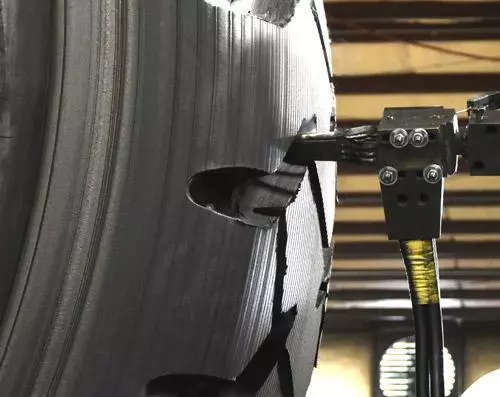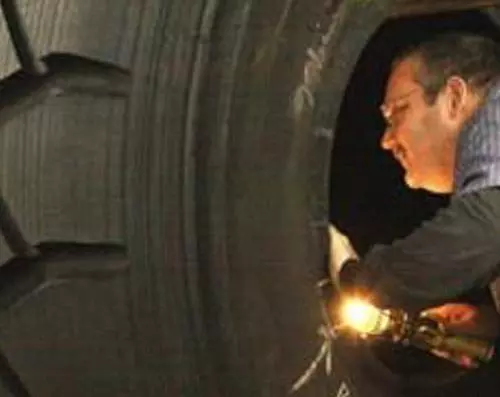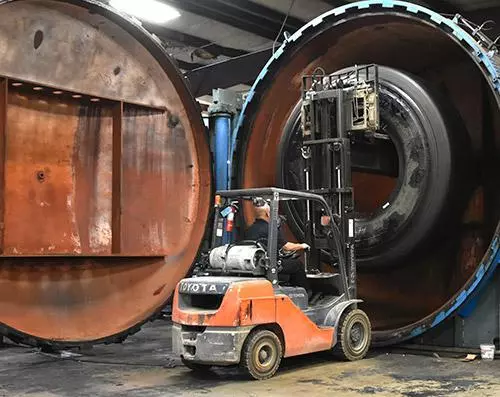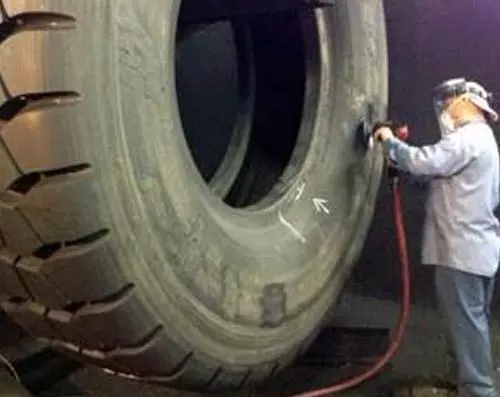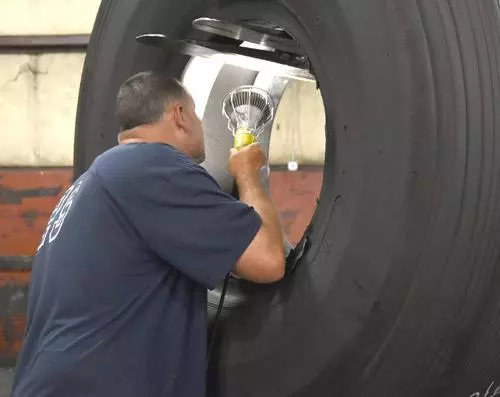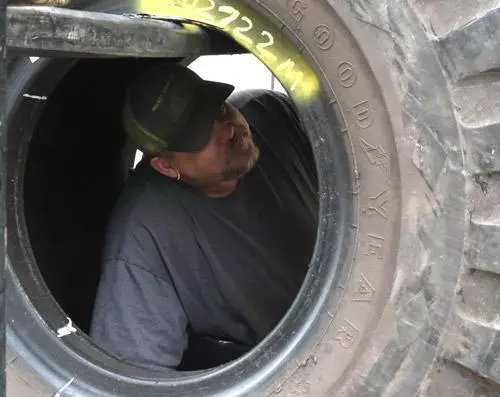Upon completion of the M-Lug tire building process, the tire goes to the Grooving department, where the tread is designed and cut into the rubber by a computer-controlled groover. Our groovers are fully automatic and controlled by a CNC computer, which can store up to 600 programs. They are designed for complete interface of the buffing-building and cutting procedures. This system ensures that your tires are retreaded to the precise radius, diameter, and tread-depth specifications dictated by your tread design.
- Details
- Written by Super User

